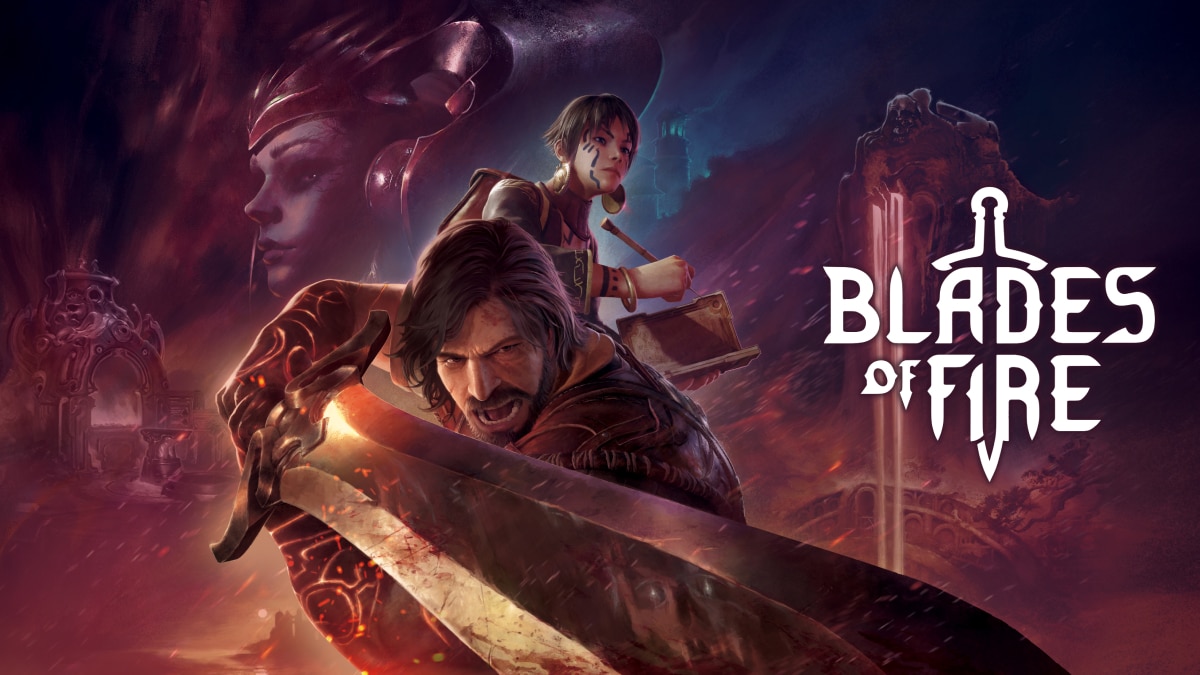Whilst it’s easy to say that any game with a bonfire-and-respawning-enemy system is a Souls-like, it doesn’t mean there are bad ones. We’ve had Lies of P, Mortal Shell, The Surge 2 (I liked it), and many more in-between. Now, in a similar vein to the popular sub-genre, we have Blades of Fire. But don’t immediately go “Blah, Souls clone” and leave. This one’s got some neat mechanics to it.
Set in a high fantasy world of humans created by giants rather than one big, omnipotent force, Blades of Fire tells a tale of corrupt kingdoms, mad royals and a simple man on a quest for some simple revenge. But that doesn’t mean simple game, with a literal crafting and forging system that rivals some classics (that I’ll name-drop later).
So, is it worth forging your way through this new take on an established genre, or does this need smelting with the rest of the imitators? These blacksmith puns will make sense, so let’s find out how, shall we?
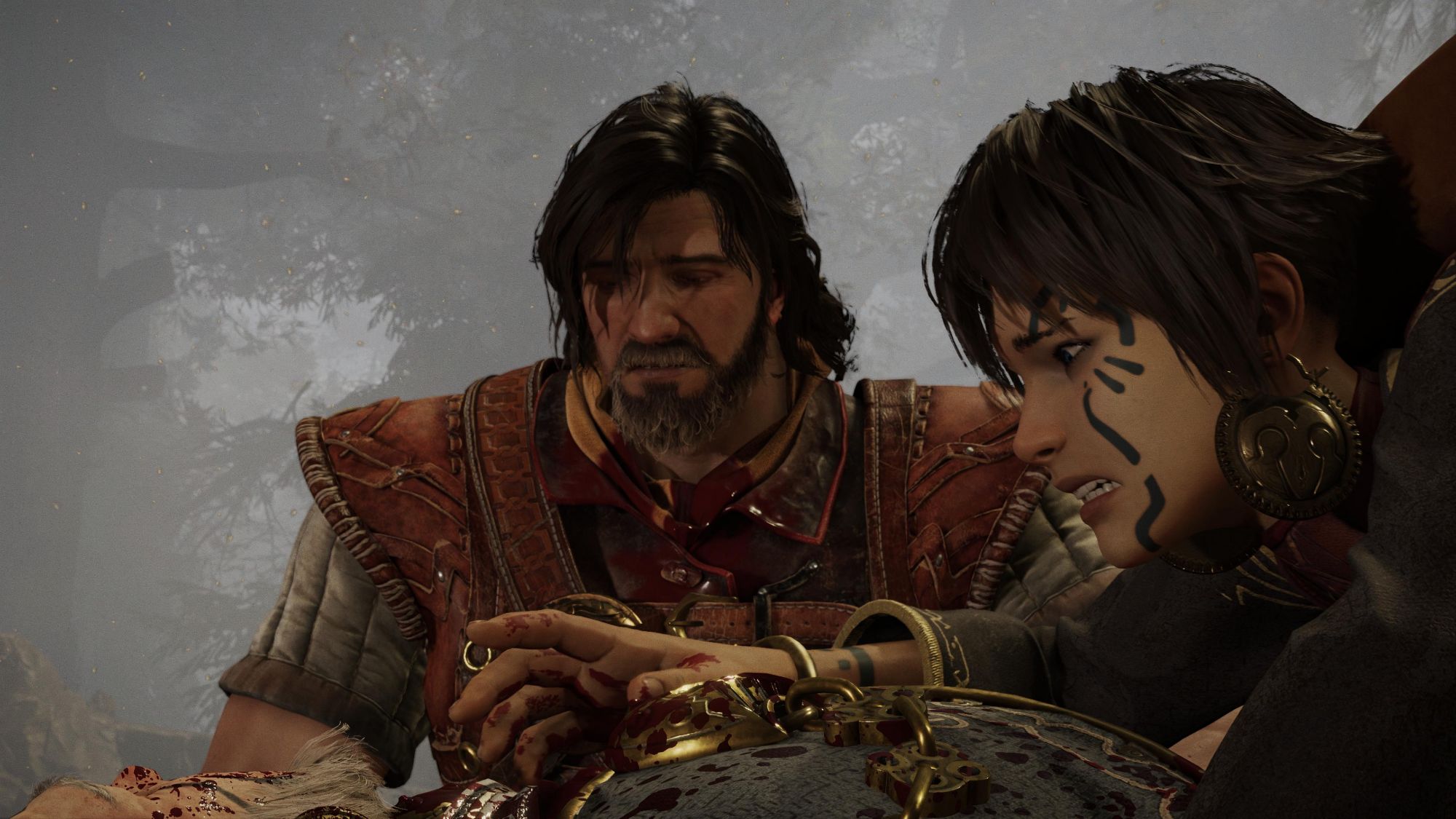
A Bloody Good Fable
Once upon a time, as is fitting for a fantasy game world like this, there were The Forgers. These giants created humans, and the secret of The Steel. The capitalisation is important there, it’s not a typo. The Forgers were the peaceful type, creating humanity in a kind and benevolent way, worshipping steel and forging many a peaceful weapon and civilisation out of it. Then, as things do, a war broke out and forced the Forgers into exile or death, a bit like a medieval Order 66.
You, the protagonist, are Aran De Lira: a once-noble and first of the King’s Ward. The precursor to the game is that Aran knew the now-Queen Nerea, and all was well. Except that once she took power, Nerea has gone a big evil, using spellcraft to turn the revered steel to stone.
Our story begins as the Abbot Dorin brings Aran a Forger’s Hammer, one of the few legendary tools that’ll allow the creation of new steel weaponry. That’s right, Aran descends from Forger stock, and has a bit of a grudge against the Queen. Joined by the young scholar Adso de Velk, our quest for revenge starts straightforward enough… but this is high fantasy, expect grandiose adventuring.
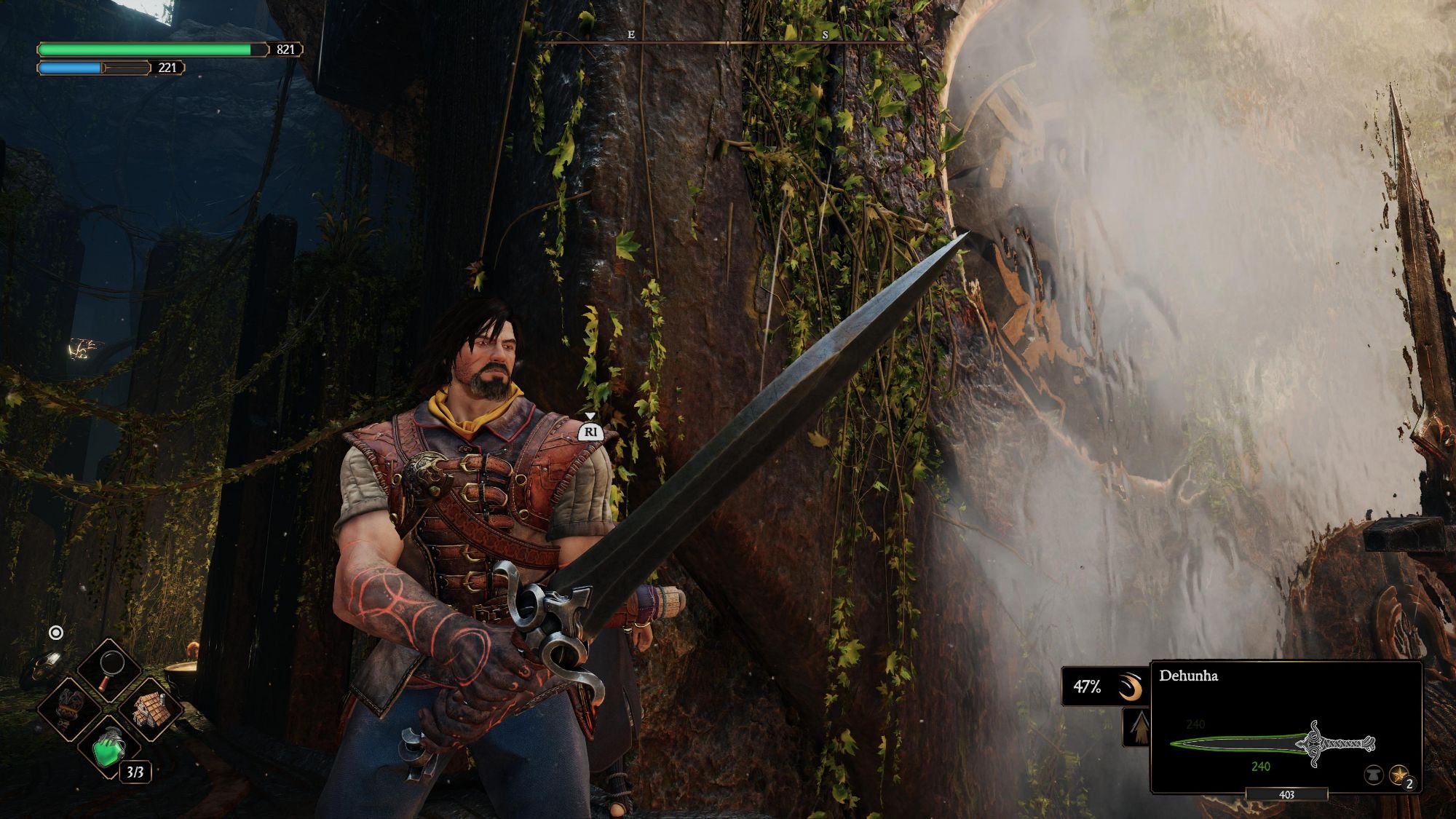
On The Wheels Of Steel
In terms of gameplay, by which I mean the exploring of the land, one could call Blades of Fire Souls-like in that aspect. Players move through a sort-of-linear progression of areas, with a little backtracking and keys-to-door situations. There’ll be doors that won’t open from once side, but once an offending enemy has been routed, it’ll become accessible. Anvils, previously turned to stone but renewed by De Lira’s magic hammer serve as rest stops. They’ll also take players to The Forge, but we’ll get into that a little later.
The world of Blades of Fire does do something different, however: it has colour. Rather than the grimdark stylings and dilipated Tim Burton castles, the lands here are all vibrant and look once-lived in. If you wanted cinematic comparisons, think Krull, Willow or Legend: that pleasant fantasy aesthetic that slips into the dark undertones of danger when the setting sees fit.
It does have that usual biome style to it, like a Crystal Maze gauntlet from the minds of J.R.R Tolkien and Hero Quest. You know the type: starting simple enough in towns and hamlets, then we get onto swamps, dungeons and the like. I’d say I won’t spoil it, but if you’ve played anything in the last twenty years, you’ll get the gist. I like that the art style is more Darksiders II and Kingdoms of Amalur though, all chunky and exaggerated than boring and serious.
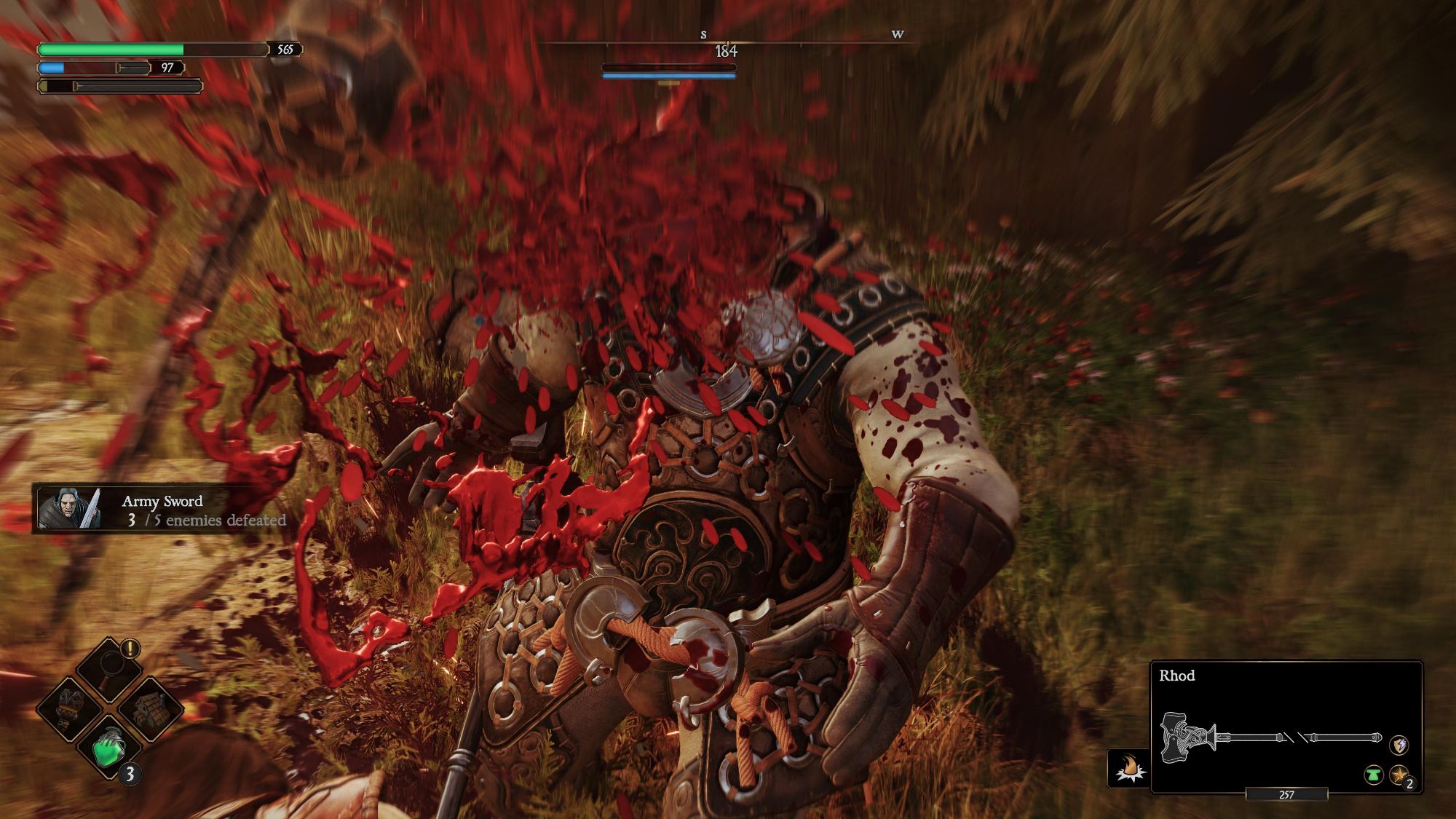
You Call That A Flamberge?
What does sell the game, or at least give it a different characteristic, is the combat. Oh yes, don’t expect the usual R1 striking, dodge-roll-to-back-stab affair here. Blades of Fire mixes things up, which surprisingly works really well. Although I will add, I was getting into The First Berserker: Khazan before I got this and it threw my muscle memory for a right loop.
For you see, combat here is mapped to the face buttons (Square, Triangle et all for the PlayStation). Which also makes them directional, with Square being a left swing, Circle a right, Triangle an overhead and Cross being an upward swing. Which sounds fancy yet basic, until you realise they can be done sequentially.
So if players are swamped by a gang of putrid zombies, they can chain left and right fell swoops to thin them out. Or a pesky guard is blocking high: swing low, aim upwards to catch him off-guard (no pun intended) before arcing that follow-up right down on his noggin.
It takes some getting used to, and there are some gripes I will address, but it’s different. It’s also very tactical and methodical, as Aran has no equippable armour to keep boosting his defense. Think Bushido Blade (or Die by the Blade for modern audiences), in that whilst it’s not instant death, swinging wild can quickly be fatal. Fortunately for Aran and his Forger’s Hammer, he can be craft-y.
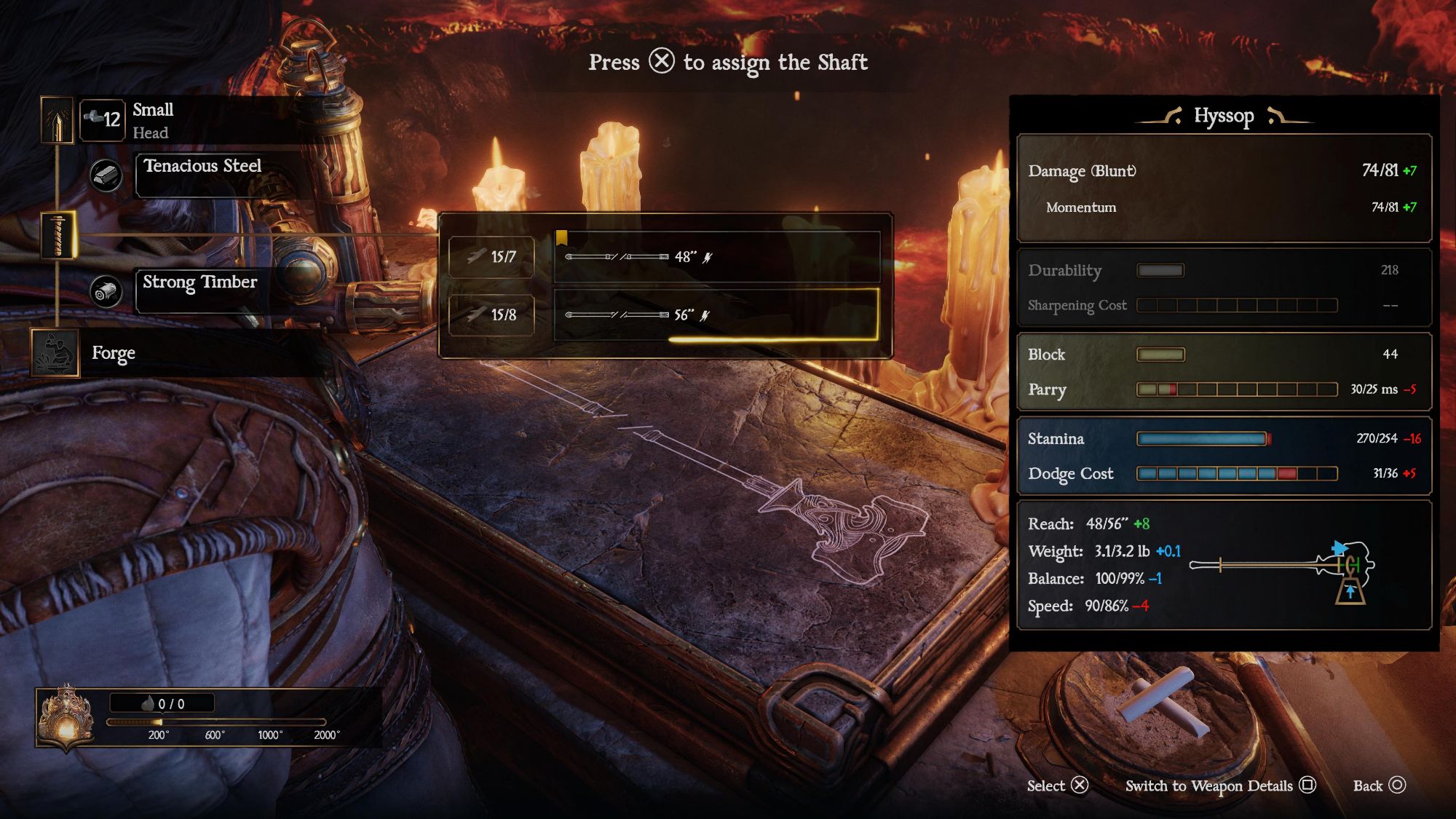
Bashing One Out
This is where the mettle meets the… err, the metal of Dark Souls. Whereas most Souls-likes have players gather materials, bash them together with one prompt and suddenly, here’s The Almighty Sword of Demon Irritation, it’s different here. Blades of Fire makes you work for it, crafting your own finely tuned weapon from your own metaphorical sweat.
There are seven weapon classes, each with five variants. So that’s thirty five weapons for Aran to craft, provided the right materials have been found, and the weapon technique learnt. The former is easy, the latter more often than not requires killing so many of an enemy type to learn that style of weapon.
Once the style is picked, the finer adjustments can be made. What size shaft or blade can make a difference between defensive capabilities and stamina use. The type of point on a sword or spear can decide the outcome of slashing or piercing damage, for instance. Then there’s the actual choice of metal for said blades, or wood for a polearm’s shaft.
It sounds complicated, but it isn’t. It reminded me of Vagrant Story a little, mixing and matching to find something that suits. There’s no elementary variations, just fine-tuned smithing. How well a player can temper a blade determines the life of the weapon, how many repairs it can withstand and how quickly it’ll blunt.
I would say this is certainly Blades of Fire’s biggest USP, and it’s easy to get sucked into. Breaking down weapons, using those parts to build better ones… it’s a game in itself. My advice: don’t get too attached, there will always be better Warhammers to make.
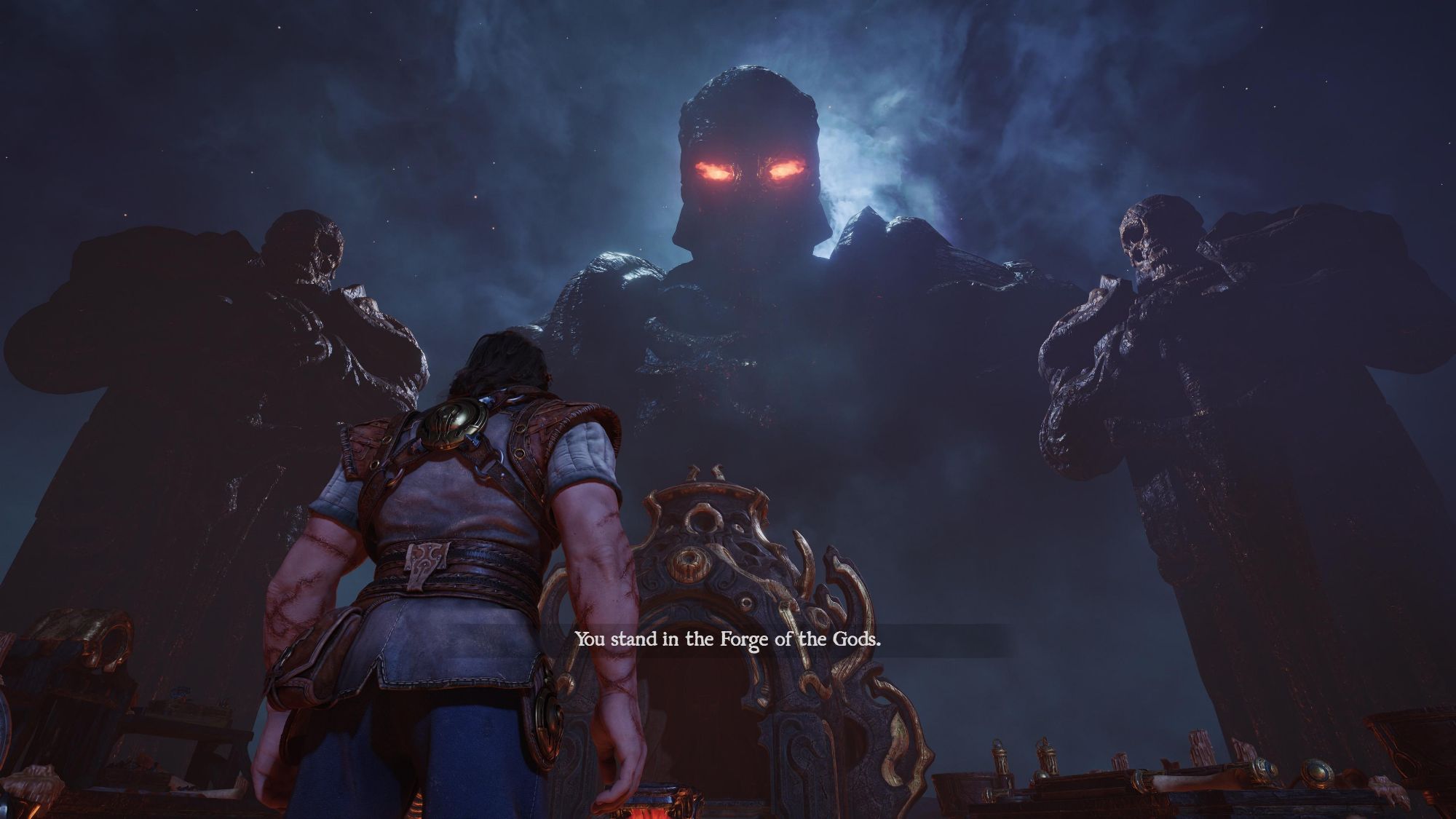
The Banter Saga
For all of its blood and gore, serious tone at times and a revenge story to boot, Blades of Fire has all the hallmarks of a grimdark, no nonsense title. Fortunately, it escapes that “file it under Souls clone” template by actually being entertaining in its journey.
Much like other buddy ensembles, like Enslaved or the lighter moments of The Last of Us (the games), the dynamic of Aran and Adso is a joy to behold. Our hero is gruff and not necessarily grumpy, but mostly quiet. Adso, on the other hand, is a young and inquisitive scholar. So naturally, he acts as the exposition-dealer, voicing out the next step in the quest.
But there’s more than that surface level, stick-and-carrot exposition. Adso doesn’t do combat, so instead he stands back and draws. Well, to be specific he takes notes on enemies to give advice and kill them better. Ergo, the more Aran kills, the more information you’ll have on their weaknesses and such. As well as a snazzy drawing in the codex.
Outside of battle, they bicker and argue, occasionally agree on things and poke fun at each other’s ages. It’s good buddy cop fodder, which makes it more entertaining. It’s just a shame that some combat niggles cause some upset.
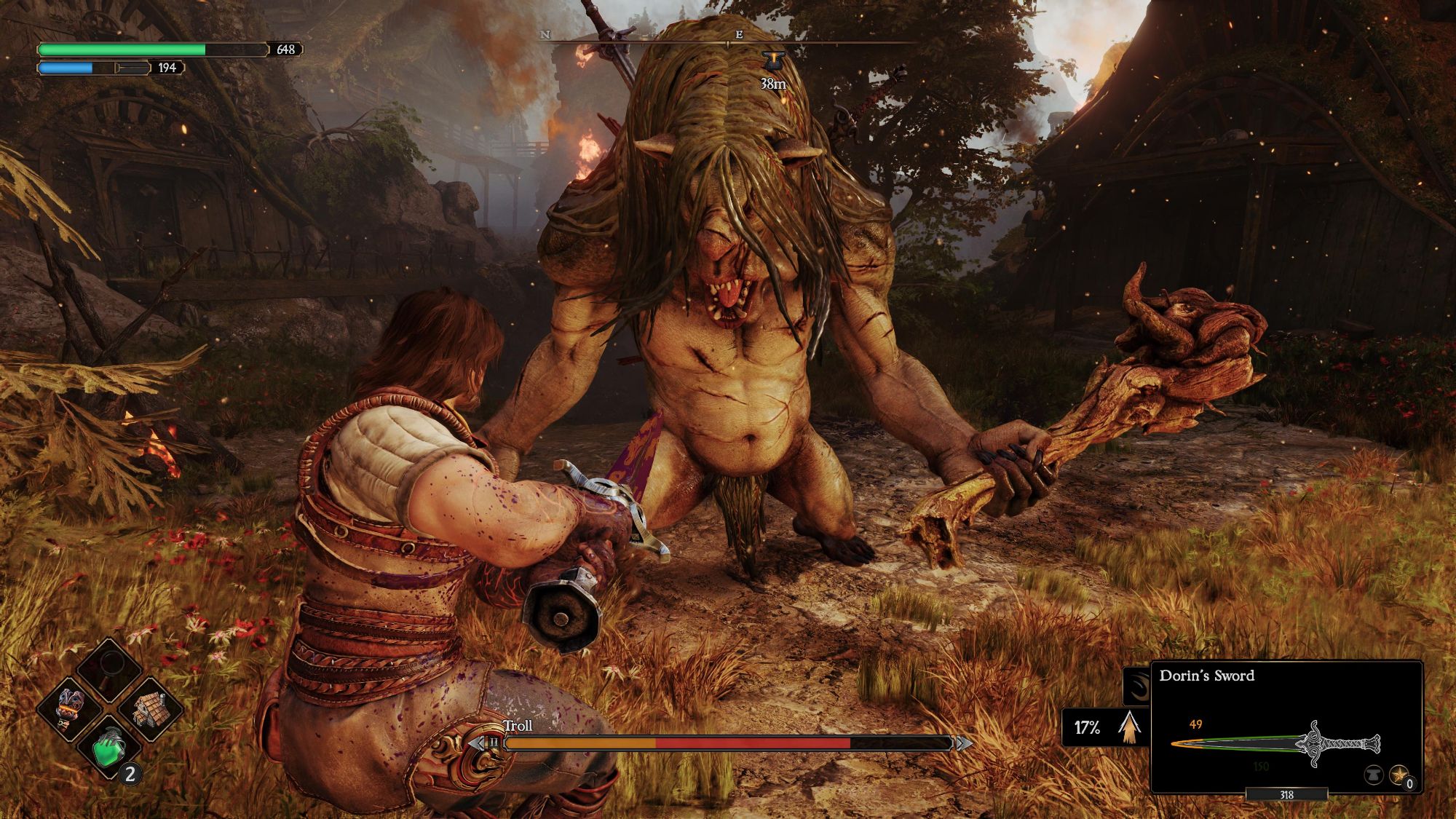
The Art Of Unfair Warfare
For context, I am no stranger to difficult combat in games. Long-time readers will know of my Sekiro exploits, as well as my comparisons to others (like in this review) that I’ve also played/beaten. So, I feel qualified in saying this: the combat in Blades of Fire is some of the most one-sided shite I’ve ever played.
I get that there’s no Geneva convention out here, but explain how every enemy can interrupt my swings, but I can’t do it to theirs? Bear in mind, if you’re swinging a hammer, it takes a little wind up time. Coupled with the aforementioned lack of armour/high damage attacks from foes, you’ll be burning through health potions in no time.
What’s worse, however, is that you can’t interrupt your own attacks. So say you go to swing high, and they’re sneaking a low attack in, you might want to block or roll. No chance, goodbye third of health bar.
Yes, I understand how momentum works. But why is feinting an attack not an option? Why can’t I rectify an over-eager swing to block instead?
And those charged, long-button-press attacks? Unless you’ve hit an absolute beaut of a parry, don’t even bother. Or say you feel like switching power for speed, and want to get more quick hits in? Good luck, as Aran has the stamina of a retired coal miner, who smokes forty an hour, and now strips asbestos without a mask.
I understand that MercurySteam were trying to go for tactical, but there’s a limit. It really sucks my enthusiasm out of combat when the enemy can swing limitlessly at me, but I can’t retaliate.
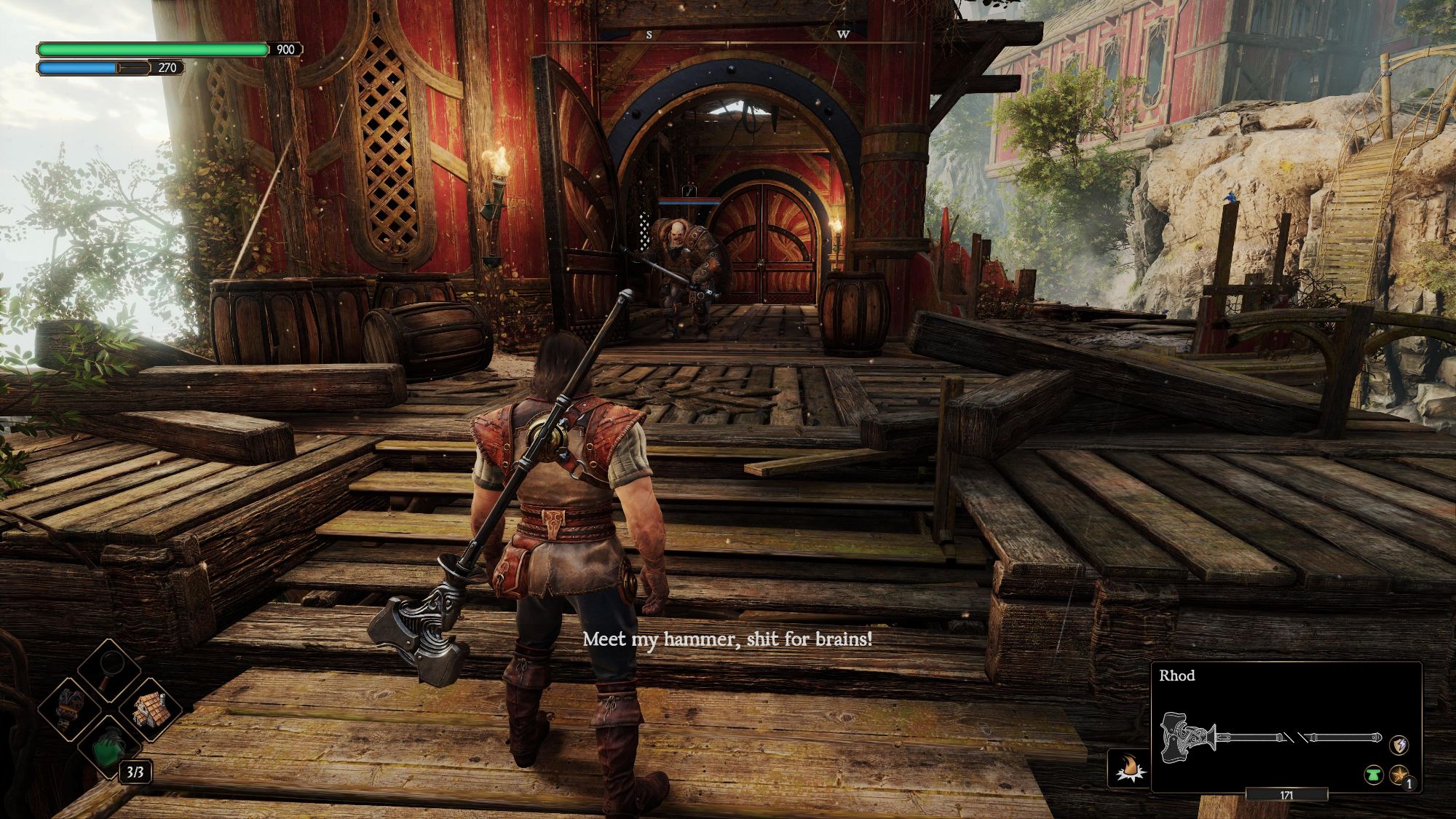
Off With Her Head
Combat issues aside, I’d like to think I’m having a good time with Blades of Fire. I say having, because I feel like I’m nowhere near finishing it. But I’d rather be honest than write some spurious guff blagging how far in I currently am.
Fortunately, if the challenge does seem daunting, the difficulty can be lowered. I’m doing it on Steel, the “normal” level for this game. Yeah, I could cop out, but I want to git gud, as they say.
On the whole, it is a very good looking, very engaging game. The voice acting actually gels together, rather than that “recorded on separate days in different countries” feel. The exploration and level design fits: it’s not overburdened with ludicrous challenges. The combat, when it works, can be stylish, cathartic and gory.
That the focus on weapon crafting over the usual stats and armour style is also a nice twist. Aran’s health and stamina get upgraded by pieces of relevant gems being scattered across the lands, rather than armour crafting.
All in all, to conclude, Blades of Fire is something bold and full of passion in a sea of Souls imitators. It has its flaws, like the combat unfairness, but the overall ambition makes it worth at least giving a try. Plus you can give your weapons really silly names if you want. I called my first spear Pohkey.
Blades of Fire is available from 22nd May 2025 on PlayStation 5 (review platform), Xbox Series S|X and PC via the Epic Games Store.
Developer: MercurySteam
Publisher: 505 Games
Disclaimer: In order to complete this review, we were provided with a promotional copy of the game. For our full review policy, please go here.
If you enjoyed this article or any more of our content, please consider our Patreon.
Make sure to follow Finger Guns on our social channels. Twitter, Facebook, Twitch, Spotify or Apple Podcasts – to keep up to date on our news, reviews and features.
